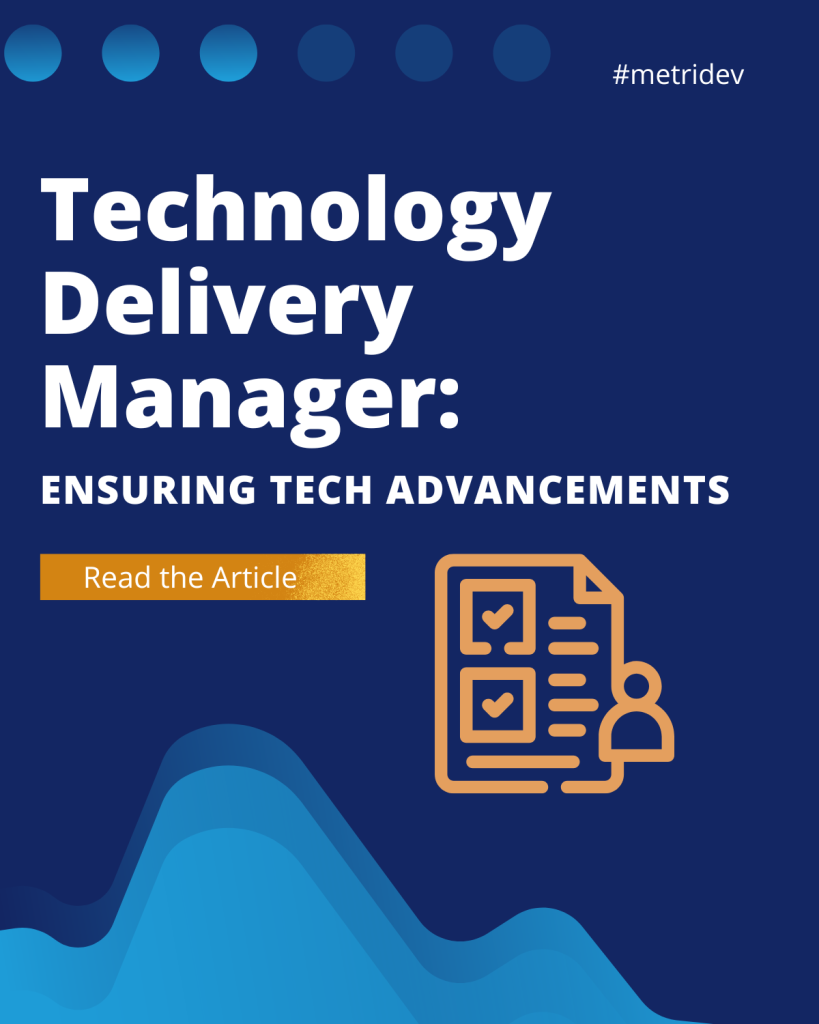Introduction
In today’s fast-paced software development landscape, the ability to quickly and efficiently deliver high-quality software is crucial for businesses to stay competitive. This is where Continuous Integration and Continuous Deployment (CI/CD) platforms come into play. These powerful tools have become an integral part of the DevOps workflow, streamlining the development and deployment process and enabling organizations to achieve faster time-to-market and improved software quality.
What is CI/CD in DevOps?
Continuous Integration (CI) and Continuous Deployment (CD) are two essential practices in the DevOps methodology. CI is the process of automatically building, testing, and integrating code changes into a shared repository, ensuring that the codebase is always in a deployable state. CD, on the other hand, is the process of automatically deploying the tested and validated code changes to the production environment. Together, CI/CD forms a crucial part of the DevOps workflow, enabling teams to deliver software updates and new features to users faster and more reliably.
What is a CI/CD Platform?
A CI/CD platform is a software tool or a suite of tools that automates the entire software delivery pipeline, from code integration to deployment. These platforms provide a centralized, integrated environment where developers can manage the entire software development lifecycle, including version control, build automation, testing, and deployment.
The Importance of CI/CD Platforms in Software Development
CI/CD platforms have become essential in modern software development for several reasons. Firstly, they facilitate Faster Time-to-Market by automating the build, test, and deployment processes. Thereby enabling organizations to deliver software updates and new features to users more quickly, consequently reducing the time-to-market. Secondly, they contribute to Improved Quality through automated testing and continuous integration. this help identify and fix issues early in the development process, consequently leading to higher quality software.
Additionally, these tools Reduce Errors by eliminating manual errors and inconsistencies that can occur during the software delivery process. This way they ensure a more reliable and predictable deployment. Moreover, they foster Increased Collaboration by providing a centralized platform for developers, operations, and other stakeholders to collaborate. Thereby improving communication and visibility throughout the software development lifecycle. Lastly, CI/CD platforms offer Scalability, allowing organizations to handle the increasing complexity and scale of modern software development. Thereby enabling them to easily manage multiple projects, branches, and environments.
Key Features of a CI/CD Platform
Effective CI/CD platforms typically include the following key features:
- Version Control Integration. The ability to seamlessly integrate with popular version control systems, such as Git, to manage code changes and track the development history.
- Automated Build and Testing. Automated processes for building, testing, and validating the codebase, ensuring that every commit is thoroughly checked before being deployed.
- Deployment Automation. Streamlined deployment processes that can automatically push validated code changes to various environments, from development to production.
- Environment Management. The capability to manage and provision different environments (e.g., development, staging, production) and ensure consistency across these environments.
- Monitoring and Reporting. Comprehensive monitoring and reporting tools to track the status of the CI/CD pipeline and identify bottlenecks. Also they measure the overall performance of the software delivery process.
- Scalability and High Availability. The ability to handle increasing workloads and maintain reliable, high-performance operations, even during peak usage.
- Integrations and Extensibility. Seamless integration with other tools and services used in the software development lifecycle, such as issue trackers, artifact repositories, and cloud platforms.

How CI/CD Platforms Streamline the Development and Deployment Process
CI/CD platforms streamline the software development and deployment process by automating various tasks and eliminating manual interventions. Here’s how they achieve this:
Firstly, through Continuous Integration, when a developer commits code changes, the platform automatically builds the application, runs unit tests, and integrates the changes into the main codebase. This way it ensures that the codebase is always in a deployable state. Secondly, through Automated Testing, these tools run a comprehensive suite of automated tests, including unit tests, integration tests, and end-to-end tests. This is to validate the functionality and quality of the software.
Moreover, with Automatic Deployment, once the code changes have been successfully built and tested, the CI/CD platform can automatically deploy the updates to the desired environment. Whether it’s a development, staging, or production environment. Additionally, they offer Environment Management, providing the ability to manage multiple environments. They ensure that the configurations and dependencies are consistent across different stages of the software delivery pipeline. Lastly, through Monitoring and Feedback, these platforms offer real-time monitoring and reporting capabilities. They allow teams to track the status of the CI/CD pipeline, identify issues, and make data-driven decisions to improve the software delivery process. By automating these critical tasks, CI/CD platforms help organizations reduce the time and effort required to deliver software. They also improve the overall quality and reliability of the final product.
What is the Most Used CI/CD Platform?
While there is no single “most used” CI/CD platform, some of the most popular and widely adopted platforms in the market include:
- Jenkins: is an open-source CI/CD platform that has been a dominant player in the market for many years. It is highly customizable and supports a wide range of plugins. It is a versatile choice for organizations of all sizes.
- Travis CI: is a popular cloud-based CI/CD platform that is well-suited for open-source projects and small to medium-sized teams. It seamlessly integrates with GitHub and offers a user-friendly interface.
- CircleCI: is a cloud-based CI/CD platform that focuses on fast, reliable, and scalable builds. It is known for its intuitive configuration and support for a wide range of programming languages and frameworks.
- GitLab CI/CD: is tightly integrated with its version control and DevOps features. It is a popular choice for organizations that use the GitLab ecosystem.
- Azure Pipelines: is a cloud-based CI/CD platform offered by Microsoft. Is particularly well-suited for teams that work within the Microsoft technology stack.
These are just a few examples of the most widely used in the market. The choice of the right platform will depend on the specific needs and requirements of your organization, such as the size of your team, the complexity of your software projects, and the preferred technology stack.
Is GitHub a CI/CD Platform?
GitHub is not a standalone CI/CD platform, but it does offer integrated CI/CD capabilities through GitHub Actions. GitHub Actions is a feature within the GitHub platform that allows you to automate your software development workflows, including building, testing, and deploying your code.
While GitHub Actions provides CI/CD functionality, it is not a full-fledged CI/CD platform like the ones mentioned in the previous section. GitHub Actions is primarily focused on the CI/CD aspect of the software development lifecycle. Tools like Jenkins, CircleCI, and GitLab CI/CD offer a more comprehensive set of features and integrations for the entire software delivery pipeline.
Choosing the Right CI/CD Platform for Your Organization
When selecting a CI/CD platform, there are several factors to consider. Firstly, Integration with Existing Tools is crucial. Ensure that the platform seamlessly integrates with the tools and technologies your team is already using. For example version control systems, issue trackers, and cloud platforms. Secondly, consider Ease of Use and Configuration. Look for a platform that offers a user-friendly interface and intuitive configuration options. This makes it easy for your team to set up and maintain the CI/CD pipeline. Additionally, consider Scalability and Performance. Evaluate the platform’s ability to handle the growing complexity and scale of your software projects, as well as its performance and reliability under high workloads.
Furthermore, Monitoring and Reporting capabilities should be assessed. These can provide valuable insights into the health and performance of your CI/CD pipeline. Moreover, don’t forget to evaluate Cost and Pricing structures. Assess any subscription fees, usage-based charges, or hidden costs to ensure they fit within your organization’s budget. Lastly, consider Community and Support resources. Investigate the size and activity of the platform’s user community, as well as the availability of support resources such as documentation, tutorials, and forums. By carefully evaluating these factors, you can choose the CI/CD platform that best aligns with your organization’s needs and goals. This way you can ensure a smooth and efficient software delivery process.
Implementing a CI/CD Platform in Your DevOps Workflow
Integrating a CI/CD platform into your DevOps workflow typically involves the following steps:
- Define your CI/CD Pipeline. Establish a clear understanding of the different stages of your software delivery process. For example, code commit, build, test, and deployment.
- Configure the CI/CD Platform. Set up the platform, including connecting it to your version control system, configuring build and deployment triggers, and defining the necessary automation scripts.
- Integrate with Other Tools. Ensure that the CI/CD platform seamlessly integrates with the other tools and services used in your software development lifecycle. Like as issue trackers, artifact repositories, and cloud platforms.
- Implement Automated Testing. Develop a comprehensive suite of automated tests, including unit tests, integration tests, and end-to-end tests. This is to ensure the quality of your software.
- Establish Deployment Strategies. Define and configure the deployment strategies for your different environments. Like blue-green deployments or canary releases, to ensure a smooth and reliable delivery process.
- Monitor and Optimize. Continuously monitor the performance of your CI/CD pipeline, identify bottlenecks, and make adjustments to optimize the software delivery process.
- Train and Educate Your Team. Provide training and support to your development, operations, and other stakeholders to ensure they understand how to effectively use the platform and the associated workflows.
By following these steps, you can successfully integrate a CI/CD platform into your DevOps workflow. In addition, you can unlock the benefits of faster, more reliable, and higher-quality software delivery.
Best Practices
To maximize the benefits of a CI/CD platform, consider the following best practices. Firstly, Adopt a Shift-Left Approach. Shifting the focus of testing and quality assurance to the earlier stages of the software development lifecycle, catching issues earlier and reducing the cost of fixing them. Secondly, Implement Comprehensive Testing. Develop a robust suite of automated tests, including unit tests, integration tests, and end-to-end tests, to ensure the quality and reliability of your software. Additionally, Maintain a Clean and Organized Codebase. Encourage developers to commit small, incremental changes and maintain a clean, well-organized codebase, which can improve the efficiency of the CI/CD pipeline.
Furthermore, Establish Clear Branching and Merging Strategies. Implement a clear branching model and merging strategy to manage code changes and ensure that the main codebase remains in a deployable state. Moreover, Implement Continuous Monitoring. Continuously monitor the performance and health of your CI/CD pipeline, and use the insights to optimize the software delivery process. Foster a Culture of Collaboration. Encourage collaboration and communication between development, operations, and other stakeholders to ensure alignment and visibility throughout the software delivery lifecycle.
Automate as Much as Possible. Strive to automate as many tasks as possible, from building and testing to deployment and environment provisioning, to minimize manual intervention and reduce the risk of human errors. Lastly, Regularly Review and Improve. Continuously review and improve your CI/CD processes, incorporating feedback from your team and adapting to changes in your software development landscape. By following these best practices, organizations can unlock the full potential of their CI/CD platforms and achieve a more efficient, reliable, and high-quality software delivery process.
Challenges and Considerations
While CI/CD platforms offer numerous benefits, there are also some challenges and considerations to keep in mind. Firstly, Complexity and Overhead can be significant factors. Implementing and maintaining a CI/CD platform can add complexity to the software development workflow, requiring significant upfront investment in terms of time, resources, and technical expertise. Additionally, Security and Compliance are critical concerns. These platforms often have access to sensitive data and environments, making security and compliance a priority. Organizations must ensure that appropriate security measures and controls are in place.
Moreover, Scalability and Performance can become issues as the codebase and the number of developers grow. The CI/CD pipeline may struggle to keep up, leading to performance issues and bottlenecks. Careful planning and optimization are necessary to maintain scalability. Furthermore, there’s the consideration of Vendor Lock-in. Depending on the platform chosen, organizations may face the risk of vendor lock-in, making it difficult to migrate to a different platform in the future. Additionally, Team Adoption and Training are crucial. Successful implementation of a CI/CD platform requires buy-in and adoption from the entire development team, with adequate training and support being crucial to ensure that everyone understands and follows the new workflows.
Furthermore, Debugging and Troubleshooting can be challenging. When issues arise in the CI/CD pipeline, it can be difficult to identify the root cause and effectively troubleshoot the problem, especially in complex environments. Lastly, Integrating with Legacy Systems poses a significant challenge. Integrating this platform with existing legacy systems and infrastructure requires careful planning and coordination. To address these challenges, organizations should approach the implementation of a CI/CD platform with a well-defined strategy, adequate resources, and a commitment to continuous improvement and optimization.
Conclusion
In the fast-paced world of software development, CI/CD platforms have become an essential tool for organizations looking to streamline their delivery processes, improve software quality, and stay competitive. By automating critical tasks, such as building, testing, and deploying code, these platforms enable teams to deliver updates and new features to users more quickly and reliably.
As the software development landscape continues to evolve, the future of CI/CD platforms will be shaped by emerging trends, such as increased cloud adoption, the integration of AI and ML technologies, and a greater focus on security and compliance. By staying informed about these developments and implementing best practices, organizations can unlock the full potential of their CI/CD platforms and achieve their software delivery goals.
To learn more about how you can transform your software development workflow, Read our article about Engineering Excellence Metrics: Unveiling their Power. Take the first step towards a more efficient, reliable, and high-quality software delivery process.








Leave a Reply